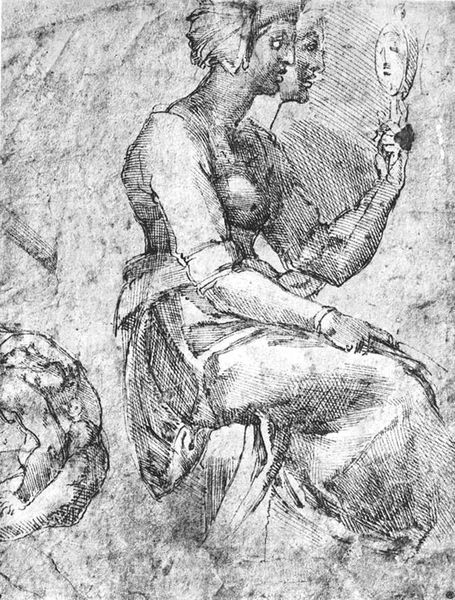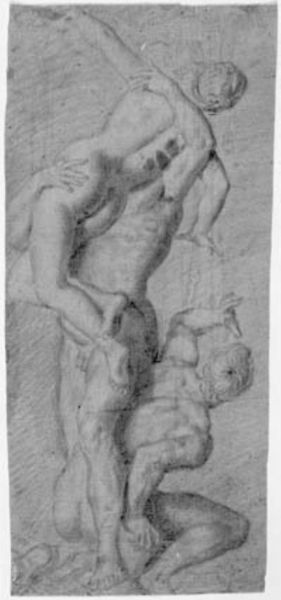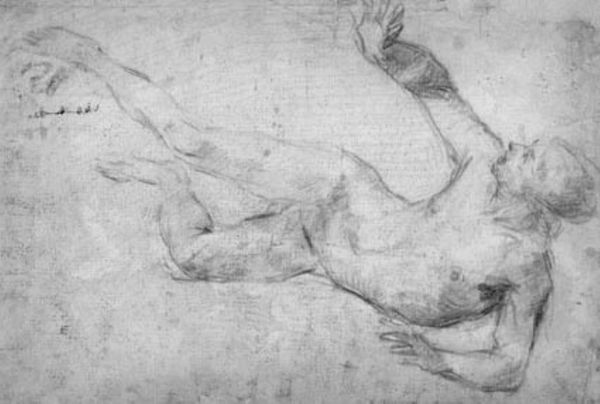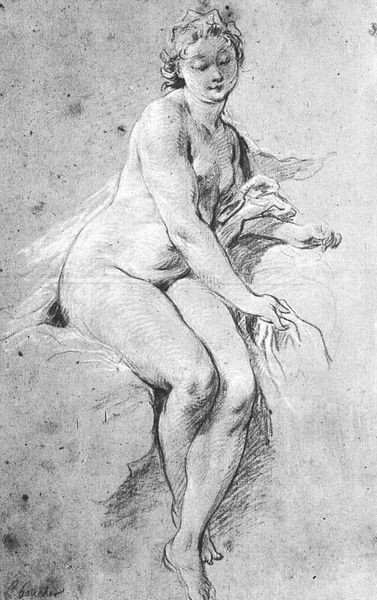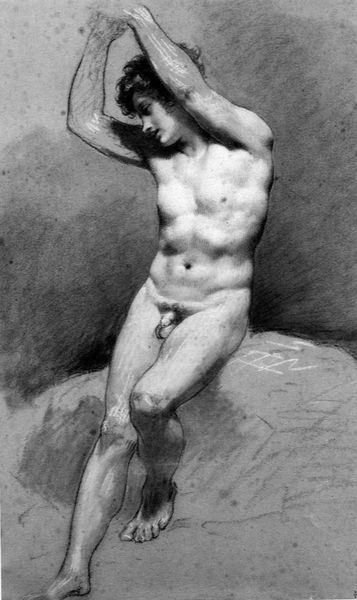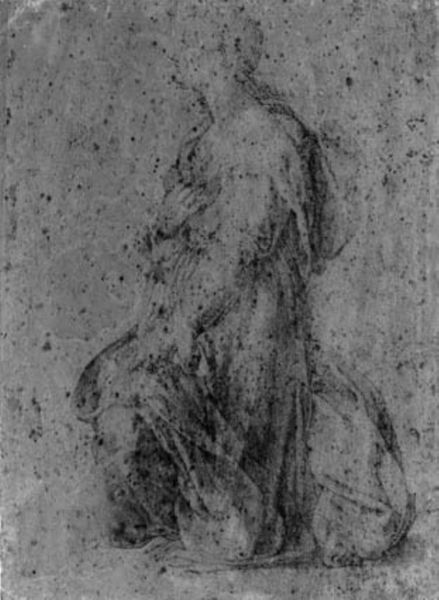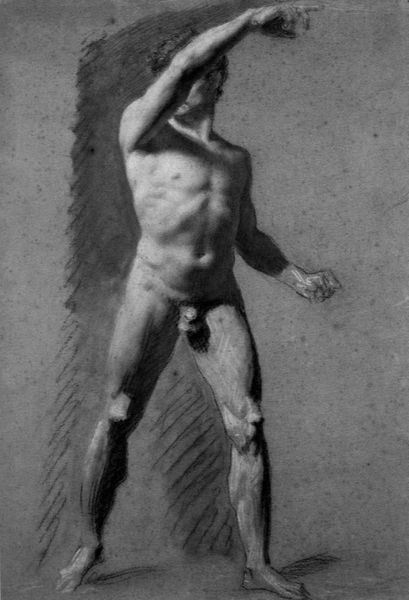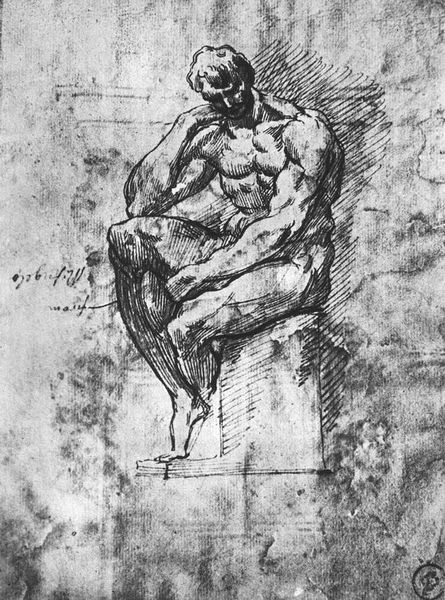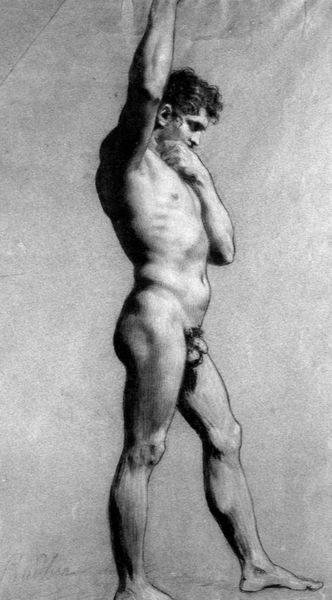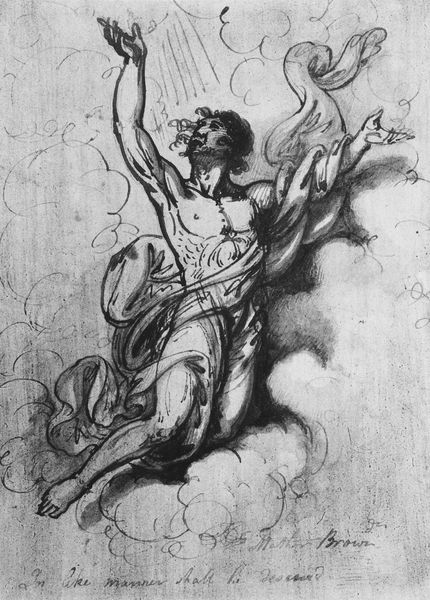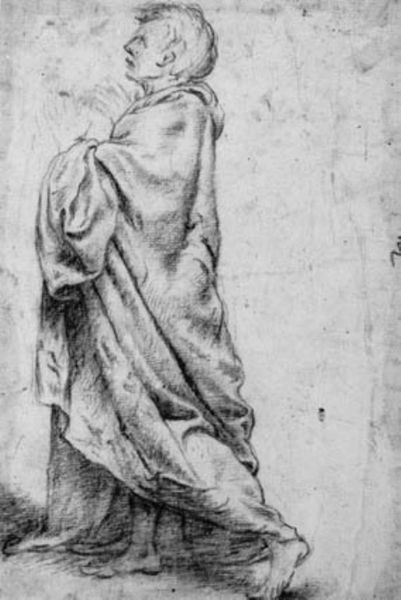
drawing, graphite, charcoal
#
drawing
#
charcoal drawing
#
figuration
#
11_renaissance
#
graphite
#
charcoal
#
charcoal
#
nude
#
graphite
Dimensions: 412 mm (height) x 262 mm (width) (bladmaal)
Curator: Here we have an arresting charcoal and graphite drawing titled "Standing male nude leaning against a rock," likely created sometime between 1611 and 1689. It's currently part of the collection at the SMK, the Statens Museum for Kunst. Editor: My immediate impression is one of restrained energy. The man’s posture suggests both relaxation and coiled strength. The soft greyscale tones add to this mood of pensive contemplation. Curator: The nude form has a long and often fraught history in European art. How do you feel this particular representation participates in, or perhaps departs from, that history? Editor: Absolutely. The figure’s pose is fascinating. The gesture is somewhat ambiguous, hinting at classical depictions of melancholic figures while his slightly tilted head, combined with the muscular build, suggests resilience. I am wondering about potential classical iconographic origins, specifically referencing a type of "heroic nudity" often meant to evoke virtues like courage and nobility. Curator: I think the image needs to be considered within a framework of artistic training practices, it is highly probable this artwork was created for academic studies, exploring human anatomy during the 17th century. We also cannot rule out this piece may be a fragment of a larger artwork. Editor: Yes, good point! It feels more like a study than a complete narrative statement. Is there anything the archives can reveal about similar nudes of the period or artistic circles working around SMK that could lend some insights? Curator: Historical records might reveal if this was part of a larger series of studies or if the artist was connected to a specific academic workshop. It also may reveal why male nudes have always been perceived differently compared to their female counterparts, by their audience. Editor: This artwork carries the symbolic power and open ended symbolism and invites reflection beyond its immediate appearance, sparking considerations about historical context and symbolism. Curator: Indeed, analyzing this piece offers insight into both artistic practices and evolving perceptions around representing the human form during the renaissance. It is worth exploring how shifting sociopolitical landscapes might have shaped the interpretations of such images.
Comments
No comments
Be the first to comment and join the conversation on the ultimate creative platform.
